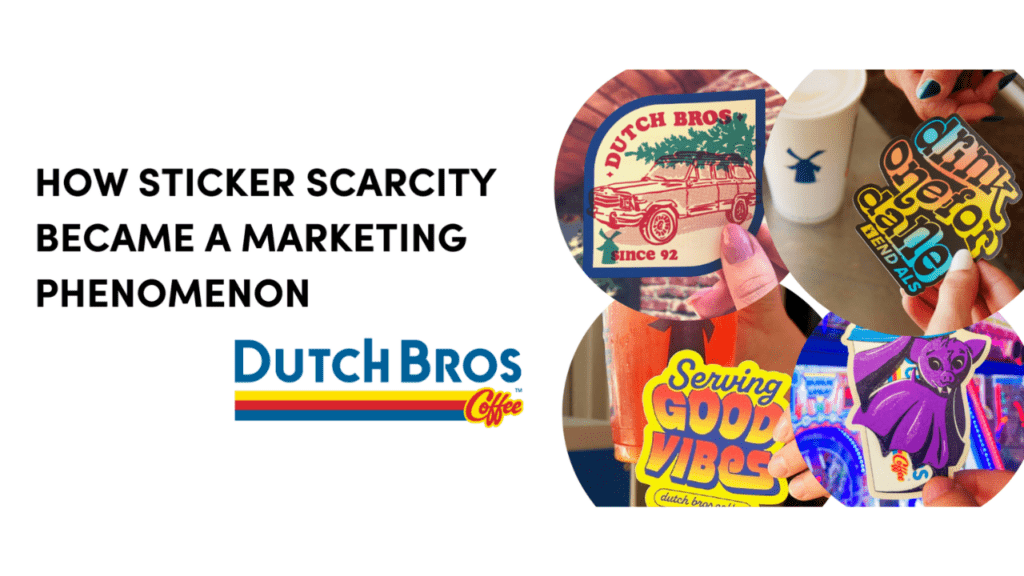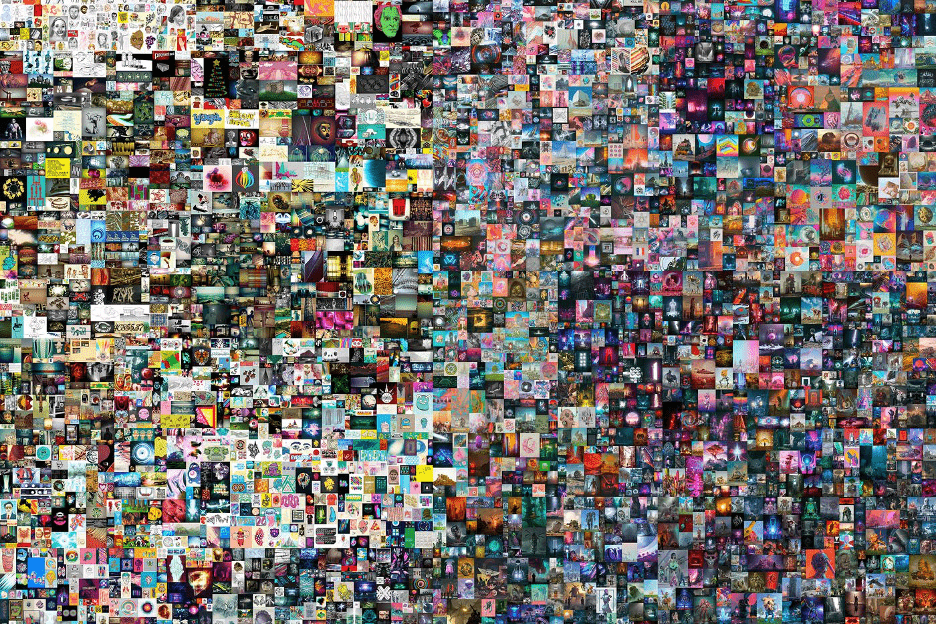How Sticker Scarcity Became a Marketing Phenomenon for Dutch Bros

People in the Pacific Northwest, particularly Oregon, can see them everywhere. The colorful, uniquely designed stickers adorn bumpers, car windows, and laptops. They are windmills and peace signs, messages of hope and happiness. No matter what they are, they stand out and land on any real estate a sticker can be placed on.
And it’s a phenomenon—with customers happily promoting Dutch Bros, the Grants Pass-based coffee chain founded in the southern Oregon city in 1992, which went public last fall. A cottage industry emerged with around 10 Facebook groups dedicated to trading, selling, and buying the stickers (in addition to other swag from the brand). Starting next month, stickers drops begin on the first Wednesday of every month, a change from the traditional first day of the month.
Before joining the brand in the summer of 2020, John Graham, Dutch Bros’ Chief Marketing Officer, had an idea of what he was walking into.
“I knew that this company was extremely well-liked from a cultural level. They were raving fans, and it was very authentic,” says Graham, a former marketer at Johnson & Johnson and GlaxoSmithKline, where he was CMO. “But then I saw how well Travis (Boersma, Dutch Bros co-founder and executive chairman) treated people at every part of the supply, employee, and customer journey. That happiness and enthusiasm show up in the brand everywhere.”
This idea of supportive, servant leadership, combined with unrelenting joy from employees (it’s hard to find a Dutch Bros employee, largely teenagers and younger people, ever having a bad day), was, at first, a shock.
“Especially coming from the East Coast, you think ‘holy smokes, what’s happening? Why are these people so happy and comfortable with customers?’” adds Graham, noting that having this kind of baseline to work from as CMO is an interesting balance of keeping authenticity while mining for greater innovation.
The “authenticity” piece of the puzzle—a word often said in marketing but not usually done well—is very real. Yes, stickers are promotional for the brand but are in lockstep with Dutch Bros’ unique brand of enthusiasm. It’s about having a point of view that people can rally around. Short-form musings like “Peace of Mind,” “Serving Good Vibes,” “Limitless Possibilities,” or “Kindness is Rad” form a tableau of optimism one may not expect from a brand slinging coffee and other drinks.
“It should never feel one-sided like, ‘here’s our brand,’” says Graham. “This is co-created with customers about the feeling we create together. The main point of view is not the windmill, it’s the cultural statement that goes with it.”

Scarcity in the physical world, abundance in digital
Yet, despite the significant exposure of the stickers, there’s scarcity built into it. Each location gets a finite number of stickers to distribute each month. Collectors, in particular, prepare well in advance.
According to Portland-area attorney Gabrielle Martinez deCastro, she’s developed a strategy of waking up very early on launch day and going to locations that she knows won’t be as busy.
“I set my alarm the night before, to wake up earlier than usual and then I plan my morning around the quest for a sticker,” she says.
Martinez deCastro, who was introduced to Dutch Bros during her senior year in 2017 at the University of Portland—specifically drinking the brand’s Rebel Energy drinks—began collecting in the summer of 2018 by accident. First getting a glitter sticker with the word “Shine” adorned on it, Martinez deCastro got hooked and started following the brand on Instagram and has built an extensive collection, missing only a few months here and there.
Graham notes that there are holiday and cultural moment repeats—including a February fundraiser for organizations feeding the hungry and May’s annual “Drink One for Dane”, which helps the MDA find a cause and cure for ALS, the disease that claimed the life of co-founder Dane Boersma in 2009—and some designs get refreshed from time to time. But, even when a store runs out, there isn’t much griping from customers because employees use it as an opportunity to tell the brand’s story with empathy.
“We’ve been consistent, which is important,” he says. “We haven’t changed anything related to the number of stickers. In some ways, it’s a chance for customers to get to know us better and get themselves ready for next month.”
Like most companies, Dutch Bros looked to bridge the physical and digital worlds, launching its first app in February 2021, with 365,000 people signing up on the first day and over a million within the first month. With payment capabilities and a loyalty program (that replaced the old school physical cards), the app has a section aptly named ”Fun.” There, digital stickers appear, and customers can change the face of their app.
According to Graham, who is also a collector and counts “Dutch Dad” as his favorite, the app is a great way to keep the spirit of the stickers’ unique place in the brand’s story while giving it a chance to be experienced by more people.
“There’s more opportunity for us to personalize this experience in the future for our customers,” says Graham. “And that adds to the amount of conversation around one of our most powerful brand assets.”


